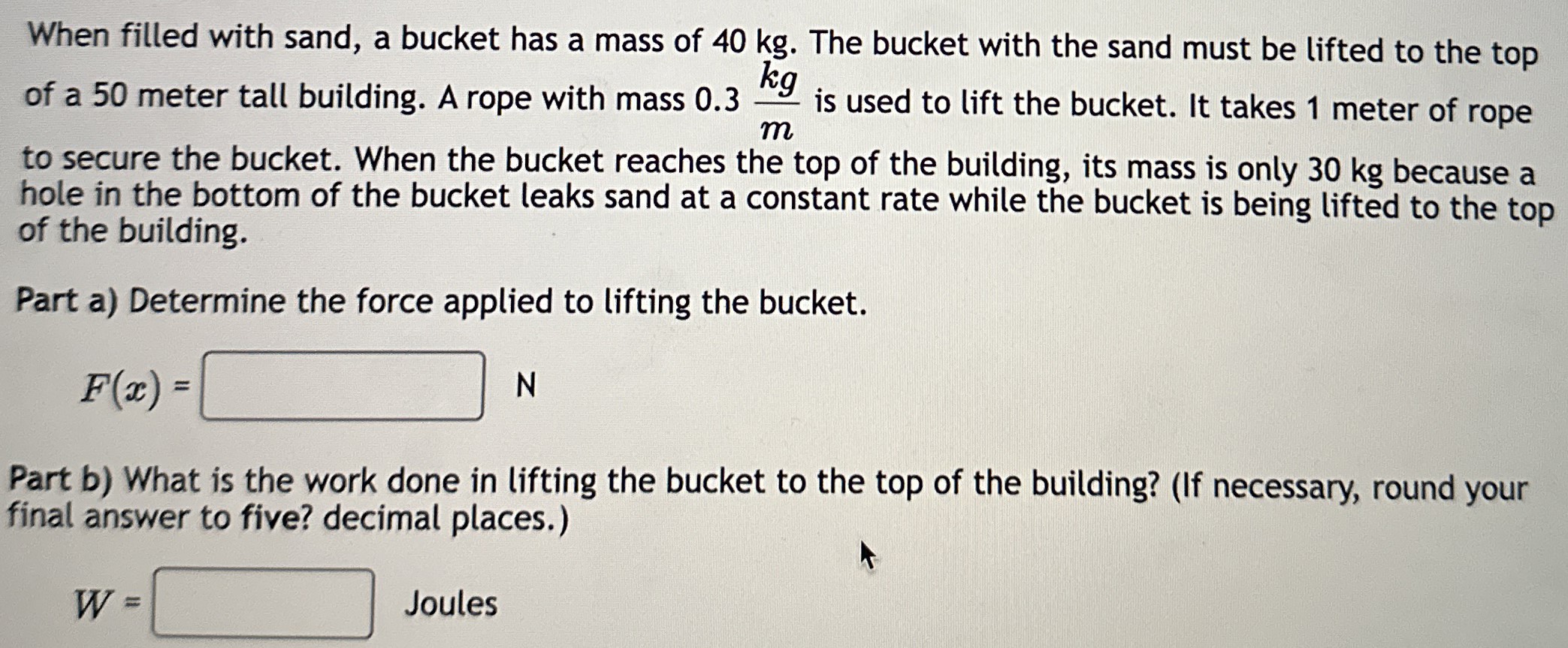When filled with sand, a bucket has a mass of 40 kg. The bucket with the sand must be lifted to the top of a 50 meter tall building. A rope with mass 0.3 kg/m is used to lift the bucket. It takes 1 meter of rope to secure the bucket. When the bucket reaches the top of the building, its mass is only 30 kg because a hole in the bottom of the bucket leaks sand at a constant rate while the bucket is being lifted to the top of the building. Part a) Determine the force applied to lifting the bucket. F(x) = N Part b) What is the work done in lifting the bucket to the top of the building? (If necessary, round your final answer to five? decimal places.) W = Joules
